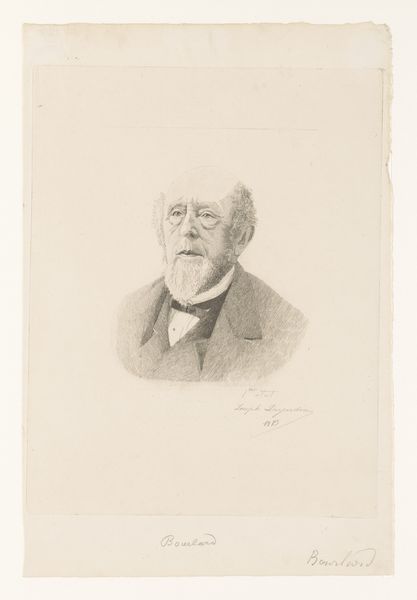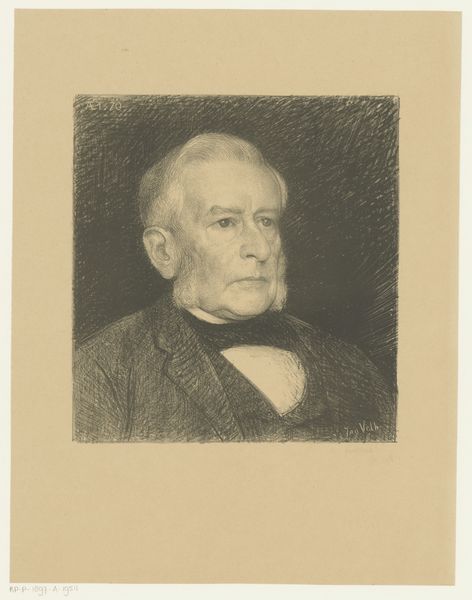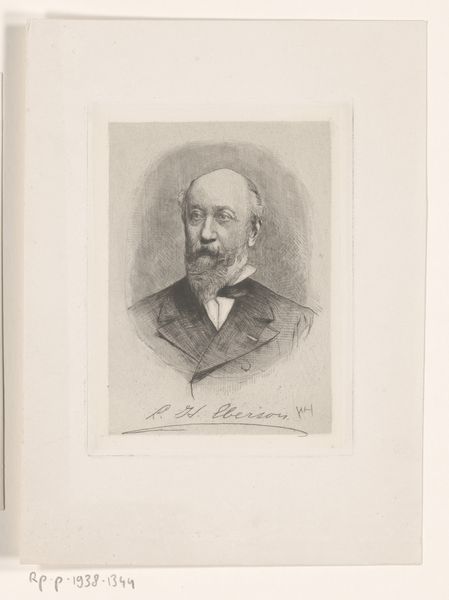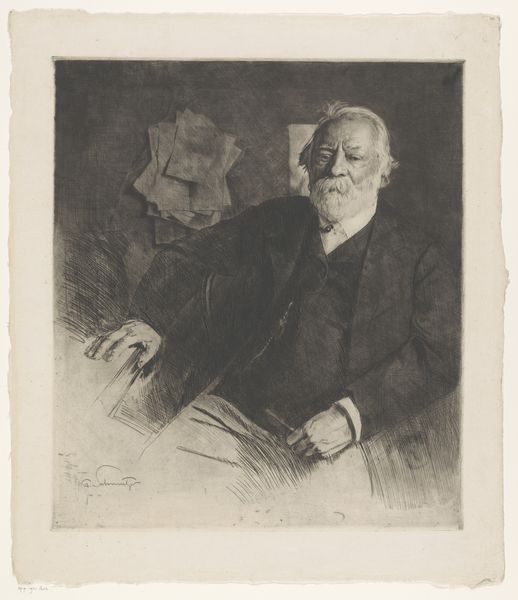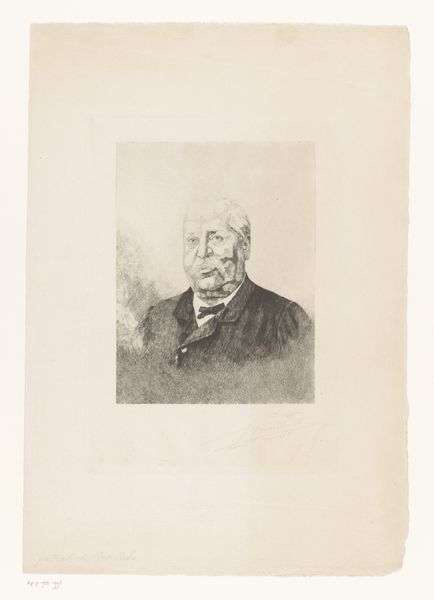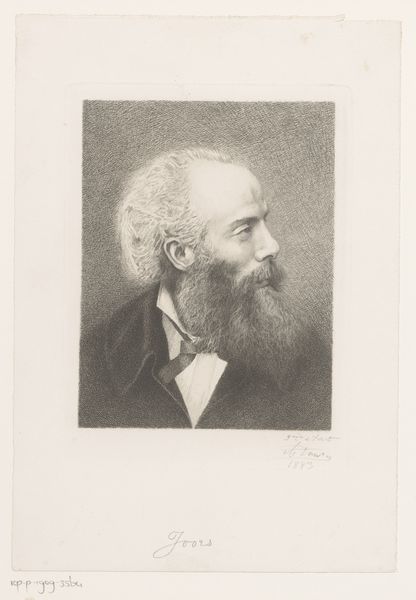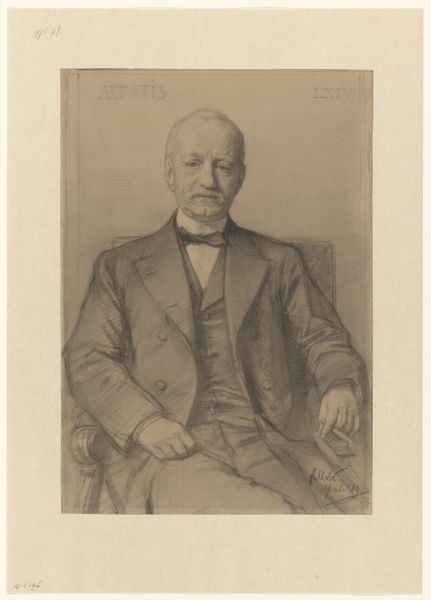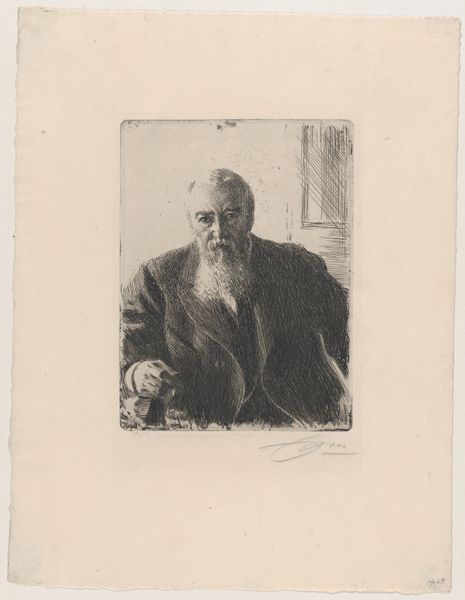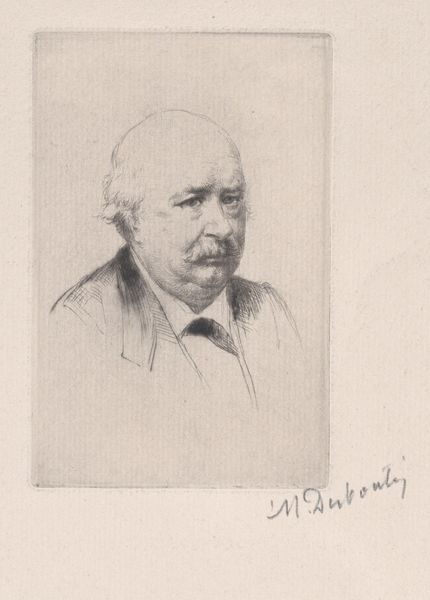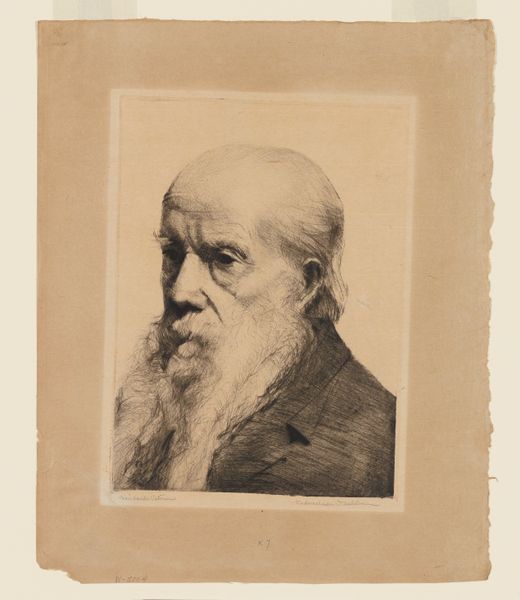
drawing, paper, pencil, graphite
#
portrait
#
drawing
#
paper
#
pencil
#
graphite
Dimensions: height 244 mm, width 183 mm
Copyright: Rijks Museum: Open Domain
Curator: Here we have Pieter de Josselin de Jong's "Portrait of Martinus Nijhoff," created in 1894. It's a drawing using pencil and graphite on paper. Editor: The first thing that strikes me is the density of the pencil strokes creating form from a subtle gradient. The sharp clarity of the man’s face draws you in immediately, set against the almost smudged chaos of the background. Curator: Indeed. Nijhoff was a significant publisher, and the portrait, appearing after his death, likely functions as a commemorative emblem. Note how the artist uses light to elevate his gaze, almost deifying him. Editor: I see that, and I'm intrigued by the composition, a carefully arranged, dark hatching surrounding the figure seems to pull back and throw the viewer into the presence of the subject. Curator: The choice of medium is significant as well. Graphite on paper offers a delicate intimacy that would be lost in a more formal medium like oil paint, speaking to his more casual presence, in a domestic sphere of intellectual production perhaps. Editor: Good point. I agree about the intimacy—it’s something about the unpretentious directness of drawing, even within the printed page, it still evokes a handmade quality that fits so well with ideas around the craft of printing books and spreading information to a wide reading public. Curator: And this speaks to how the printed image can hold the presence of those lost. Here we are, over a century later, contemplating Nijhoff’s place in literary history through this simple graphite drawing, a direct line through cultural memory. Editor: Exactly, seeing those artistic and publishing tools brought to bear gives a certain tangibility to history. It provides this lasting connection to our recent past. Curator: The use of stark values allows us to not forget the subject of the portrait or those in that sphere. Editor: A sensitive portrait of a powerful man, quite memorable.
Comments
No comments
Be the first to comment and join the conversation on the ultimate creative platform.

